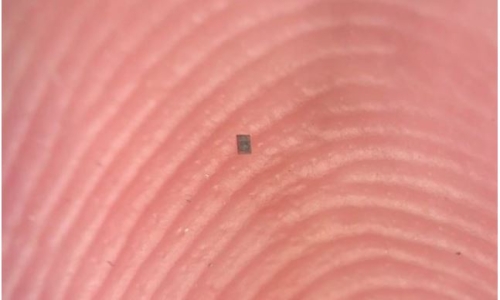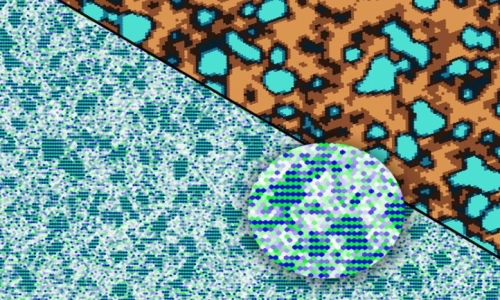


 4:59:17
4:59:17  2019-04-11
2019-04-11  1171
1171

Memory can deteriorate naturally, due to age, and even when this process is not related to neurodegenerative conditions, such as Alzheimer's, it can still affect a person's quality of life. Now, researchers from Boston University in Massachusetts are exploring ways of fighting age-related memory decline.
"Working memory [...] is a fundamental building block of human cognition," explains Robert Reinhart, Ph.D., the director of the university's Visual Cognitive Neuroscience Laboratory.
"It's been called, classically, the 'workbench of the mind' or the 'sketchpad of the mind.' It allows us to hold information in our minds over a period of seconds," he continues.
Essentially, this is the type of memory that allows a person to make spontaneous calculations and assessments, and navigate daily life situations.
But working memory also starts to naturally decline with age, which means that, as a person grows older, they may find it more difficult to perform some tasks, such as keeping track of their finances.
"Working memory [...] is where we think, where we problem-solve, where we reason, plan, perform mathematical calculations, make decisions. It's essentially where consciousness lives."
Robert Reinhart, Ph.D.
For this reason, Reinhart and colleagues have decided to look into why working memory begins to decline with age and to test experimental methods of reversing that decline.
"One of the major goals in the field of neurocognitive aging is to understand the brain basis for working memory decline in aging, and this is one of the goals that we tried to tackle in this [new] work," says Reinhart.
The researchers present their findings in a paper now published in the journal Nature Neuroscience.
The importance of brain wave synchronicity
The authors note that, so far, the working theory has been: This type of memory takes a hit later in life as a result of brain areas that would normally work together falling out of sync.
A key characteristic of this desynchronization, they go on to explain, is the disruption of brain waves — patterns of electrical activity that indicate brain cell activity — that would normally coordinate. Scientists call this coordination "cross-frequency coupling."
More specifically, the researchers link the maintenance of working memory with the cross-frequency coupling of two types of brainwaves, gamma and theta, in the prefrontal and temporal regions of the brain.
In order to confirm that theta and gamma brain waves had fallen out of sync in older adults, Reinhart and colleagues used EEG scans to monitor the brain activity of two cohorts: 42 participants aged 20–29 and 42 participants aged 60–76.
Indeed, the scientists saw that during working memory tasks, the older adults performed worse than the younger adults, and they also presented "uncoupling" of theta and gamma brain waves.
Based on this, the researchers hypothesized that using electrical brain stimulation to resynchronize the two types of brain waves might restore working memory capacities in the older cohort.
Thus, Reinhart says, "We developed an innovative neuroscience method that involved noninvasively and safely stimulating the human brain with extremely weak electrical currents in a very specific way."
'We can rapidly boost memory function'
This approach yielded promising results: As they received brain stimulation, the older participants began to perform better at working memory tasks — almost as well, in fact, as their younger counterparts.
The researchers also found that the brain stimulation technique improved synchronization between gamma and theta brain waves in the left temporal and prefrontal cortexes.
"[We observed that] by using this type of stimulation, we can reconnect or resynchronize those faulty brain circuits in the brains of the elderly and then rapidly boost their working memory function," explains Reinhart.
"And that boost in function, we found, lasted for at least 50 minutes after we had stopped the brain stimulation, and this was after merely 25 minutes of brain stimulation session," he adds.
The researchers explain that their current findings are important for more than one reason.
First, as Reinhart notes, "They not only give us new insights into the brain basis for age-related memory decline, but they also show us that the negative age-related changes are not unchangeable, that we can bring back the more superior working memory function that [a person] had when [they] were much younger."
This could allow specialists to boost the independence and life quality of older adults, who would be able to continue relying on healthy cognitive function.
In addition, the investigators emphasize that the new technique could, in the future, be honed as a therapy for neurodegenerative disorders, such as Alzheimer's disease.
"[W]orking memory deficits and problems in functional brain connectivity are really central to many brain disorders, [...] and our hope is that this work will help lay the basic science groundwork for an entirely new avenue of research, where we develop new, noninvasive neuroscience tools to help people who are suffering from brain disorders," says Reinhart.
By Maria Cohut, Medical News Today
Reality Of Islam |
|

A tiny robo

By applying

Stanford, C

A new study
 9:3:43
9:3:43
 2018-11-05
2018-11-05
10 benefits of Marriage in Islam
 7:5:22
7:5:22
 2019-04-08
2019-04-08
benefits of reciting surat yunus, hud &
 9:45:7
9:45:7
 2018-12-24
2018-12-24
advantages & disadvantages of divorce
 11:35:12
11:35:12
 2018-06-10
2018-06-10
 6:0:51
6:0:51
 2018-10-16
2018-10-16
 7:0:55
7:0:55
 2022-05-17
2022-05-17
 7:26:19
7:26:19
 2022-04-08
2022-04-08
 6:0:8
6:0:8
 2023-03-19
2023-03-19
 10:35:40
10:35:40
 2022-05-26
2022-05-26
 9:50:37
9:50:37
 2023-02-28
2023-02-28
 2:34:48
2:34:48
 2022-01-18
2022-01-18
 2:13:43
2:13:43
 2022-05-27
2022-05-27
 5:41:46
5:41:46
 2023-03-18
2023-03-18
| LATEST |